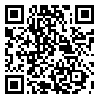Fri, Aug 29, 2025
[Archive]
Volume 4, Issue 4 (October 2008)
IJEEE 2008, 4(4): 176-190 |
Back to browse issues page
Download citation:
BibTeX | RIS | EndNote | Medlars | ProCite | Reference Manager | RefWorks
Send citation to:



BibTeX | RIS | EndNote | Medlars | ProCite | Reference Manager | RefWorks
Send citation to:
M. Gitizadeh, M. Kalantar. FACTS Devices Allocation to Congestion Alleviation Incorporating Voltage Dependence of Loads. IJEEE 2008; 4 (4) :176-190
URL: http://ijeee.iust.ac.ir/article-1-84-en.html
URL: http://ijeee.iust.ac.ir/article-1-84-en.html
Abstract: (18796 Views)
This paper presents a novel optimization based methodology to allocate Flexible
AC Transmission Systems (FACTS) devices in an attempt to improve the previously
mentioned researches in this field. Static voltage stability enhancement, voltage profile
improvement, line congestion alleviation, and FACTS devices investment cost reduction,
have been considered, simultaneously, as objective functions. Therefore, multi-objective
optimization without simplification has been used in this paper to find a logical solution to
the allocation problem. The optimizations are carried out on the basis of location, size and
type of FACTS devices. Thyristor Controlled Series Compensator (TCSC) and Static Var
Compensator (SVC) are utilized to achieve the determined objectives. The problem is
formulated according to Sequential Quadratic Programming (SQP) problem in the first
stage. This formulation is used to accurately evaluate static security margin with congestion
alleviation constraint incorporating voltage dependence of loads in the presence of FACTS
devices and estimated annual load profile. The best trade-off between conflicting objectives
has been obtained through Genetic Algorithm (GA) based fuzzy multi-objective
optimization approach, in the next stage. The IEEE 14-bus test system is selected to
validate the allocated devices for all load-voltage characteristics determined by the
proposed approach.
Keywords: Congestion Alleviation , FACTS , Fuzzy , Genetic Algorithm , Optimal Location , Voltage Stability
Type of Study: Research Paper |
Received: 2008/12/22 | Revised: 2011/07/09 | Accepted: 2011/07/09
Received: 2008/12/22 | Revised: 2011/07/09 | Accepted: 2011/07/09
| Rights and permissions | |
 |
This work is licensed under a Creative Commons Attribution-NonCommercial 4.0 International License. |







